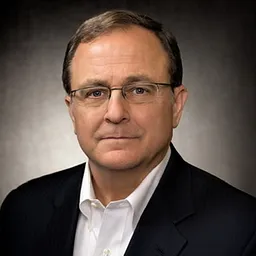The business world is changing, driven by big shifts in energy demand and production. Are you ready to rethink your role as a distributor in the new normal?
Welcome to NAED Office Hours Quick Take edition. As an extension of NAED’s Futures Group, Office Hours is a bold exploration of the future of distribution in electrical markets. Office Hours is held monthly and open to anyone seeking a thoughtful discussion about big ideas and the specific actions needed to move our industry forward. Our goal is to think differently, push boundaries, make tough calls, and, most of all, invite debate. Below, we ask you to share your thoughts on the questions that must be answered and actions that must be taken, individually and collectively, as input to an upcoming Office Hours episode.
Shifting priorities
Peter Zeihan’s new book, The End of the World is Just Beginning, is a must-read for all distribution leaders, supply chain practitioners, and B2B innovators. Zeihan explains that the global order established after the second world war is unraveling, driven by industrialization, declining birth rates, and challenges to maintaining or enforcing freedom of commerce, especially on the high seas. The coming regionalization of supply chains, economies, and national collaborations significantly affects the electrification of power and the move to renewable energy. Zeihan points to the need for a new economic discipline beyond capitalism, socialism, and mercantilism, calling for a system not founded on the presumption of evergrowing consumption by ever-expanding populations.
Zeihan’s analysis is a call to action for reinventing distribution, beginning with the fundamental role of every intermediary: providing access to the essential resources business customers need for building products and running operations. Since the end of the second world war, distribution has evolved as a scaled network designed to stock inventory in physical warehouses, take orders, and add product-centric value through advice, training, customized delivery, light manufacturing, and more. But is that enough? Can distributors do more? What can distributors learn from Zeihan? Can they reinvent what it means to be a distributor in the modern world?
Here are three ideas, prompted by what I heard from Zeihan at NAED’s 2022 National Meeting, his podcast conversation with NAED’s Ed Orlet, and after reading his book:
● Access to inventory. The products customers need to build products and run operations are in short supply. It’s a crisis that will not go away as the COVID-19 pandemic fades and the global supply chain works out its kinks. Customers want to know the location of their orders in real-time. Artificial intelligence tools will help optimize shipping decisions. Reshoring can shorten supply lines and create local buffer stocks. But none of this changes the new normal: Acquiring things to run a business, or transform the power grid, is increasingly complex and risky work.
● Access to labor. A worker shortage has arrived in every society around the globe, bidding up labor costs and encouraging automation. This is known, but something new is happening. Employers are hiring more for provable skills than certified education. New customer solutions for running a business or transforming the power grid will provide ontime and integrated delivery of skilled labor and effective products. Disruptors and intermediaries may create platforms or marketplaces to match workers with skills to customers that need them.
● Access to power. The growth of electric vehicles (EVs) for consumer and commercial transportation requires new methods and solutions for generating power and distributing it. Renewable energy sources, such as wind and solar, create the need for storing energy to overcome energy droughts driven by peak demand, weather, sun cycles, population migration, wars, and more. Doubtless, the build-out of a new power grid to support EVs will create demand for products and opportunities for distributors for many years to come. But as an intermediary armed with a long view, distributors may step up to enable access to power with solutions to optimize its use. Read here for ideas on powering the future of business.
Foresight and footsteps
This edition is a primer for the next NAED Office Hours, Electric Vehicle Infrastructure: Potential and Roadblocks, scheduled for December 8, 2022, at 1 pm CT. I encourage every forward-thinking distribution stakeholder, wherever you work, to join our conversation. If you are curious, thoughtful, and driven to do business differently, click here to register. Please bring your ideas and experiences, your foresight for the future of distribution, and your thoughts on the footsteps we should all take now on our journey forward. To get things started, I offer a few questions as well as a video with Ed Orlet, NAED's SVP of Government Affairs and Strategic Projects for your consideration:
● What products and associated value add must distributors offer to enable EVs and overall electrification?
● Does a solution-focused portfolio mean electrical distributors can offer non-traditional products and services as a one-stop shop?
● Do you see evidence of change or signs of opportunity in moving beyond providing access to inventory to helping customers acquire labor and power?
● How can distributors reinvent their business model to help transform a national infrastructure such as the system for generating, distributing, and using energy?
● What are we missing? Are there more important questions to be explored?
Please share your questions and comments—and better, join us for our next NAED Office Hours on December 8, 2022, at 1 pm CT. As always, feel free to reach out directly to mark.dancer@n4bi.com.
Remember to visit the page and subscribe to our email list:

